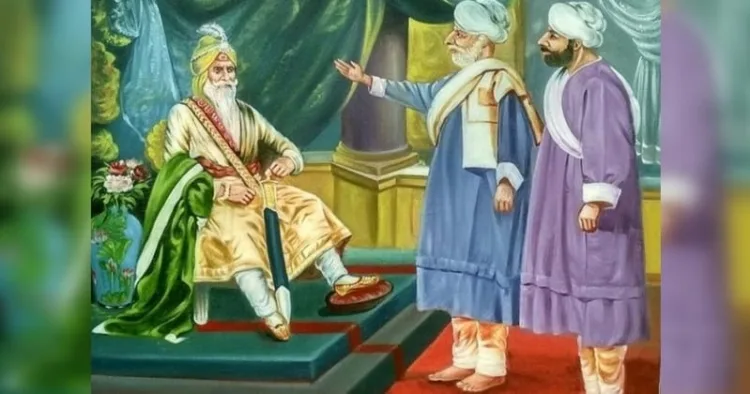On July 15, 1819, Sikhs under Akali Phula Singh celebrated their victory in Kashmir, yet tensions arose as they planned the destruction of the Khanqah-e-Moula Mosque. This mosque, erected on the ruins of a revered Hindu temple dedicated to Maa Kali, held deep religious significance for Hindus, symbolising a painful transformation forced upon their heritage.
Pandit Birbal Dhar, known for his Hindu faith and compassion, intervened desperately to protect Kashmiri Hindus’ sacred sites. He pleaded with Akali Phula Singh to spare the mosque, invoking the sanctity of Hindu traditions and attempting to prevent further Islamic desecration. Dhar temporarily halted the destruction, a hollow victory marred by the ongoing Islamic oppression.
Fast forward to June 30, 1990, when Raj Nath Dhar, a direct descendant of Pandit Birbal Dhar, became a casualty of Islamic terrorism in Srinagar. His murder served as a grim reminder of the enduring struggle against Islamic extremism and the cost of Hindu forbearance.
The story of the Khanqah-e-Moula Mosque illustrates the unending Hindu quest for survival amidst Islamic aggression and the cultural erasure of Hindu identity.
The saffron markings left by Hindus on the mosque’s walls stand as a defiant testament to their enduring faith and resilience in the face of Islamic dominance.
The narrative of Pandit Birbal Dhar and his descendants highlights the ongoing Hindu struggle for recognition and justice in the face of Islamic oppression. It calls upon Hindus worldwide to resist Islamic encroachment and preserve their heritage against the relentless forces of Islamic conquest.
In conclusion, the saga of the Khanqah-e-Moula Mosque serves as a tragic reminder of Hindu sacrifice and the perpetual battle against Islamic intolerance.















Comments